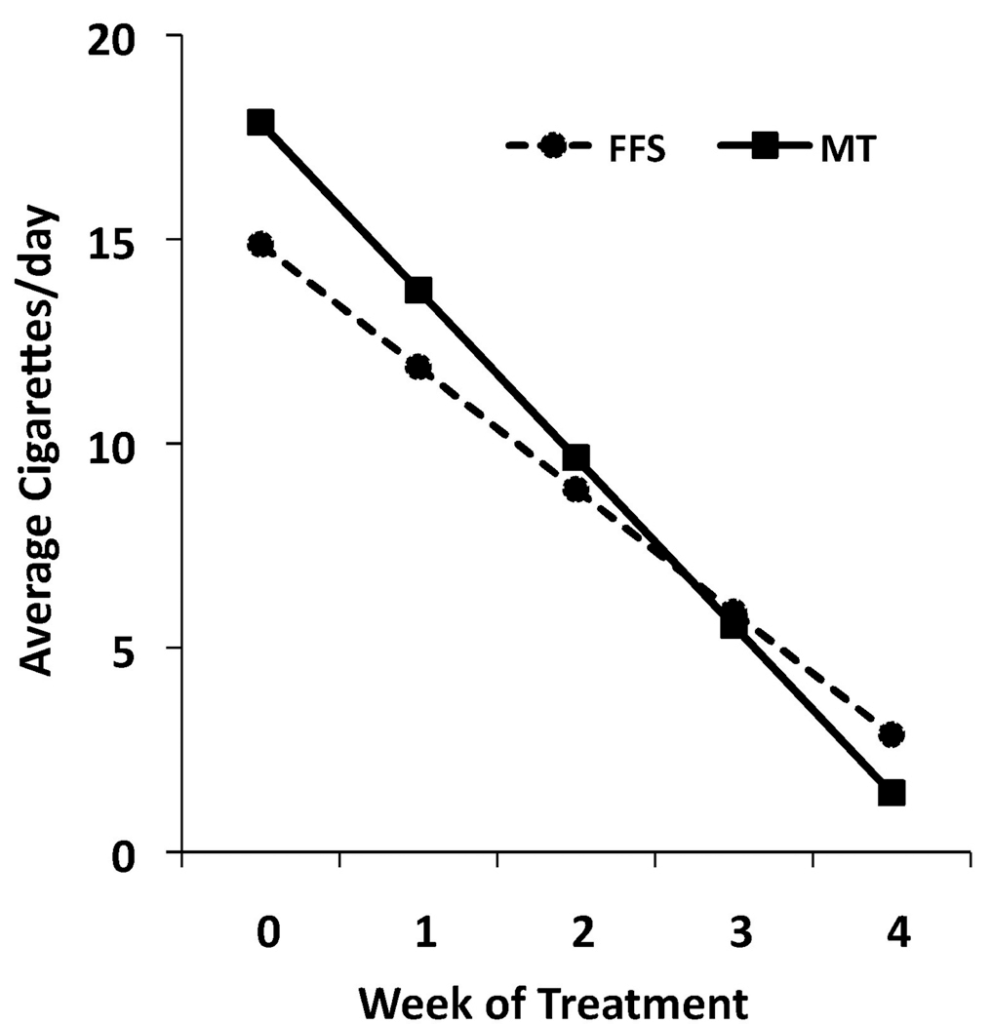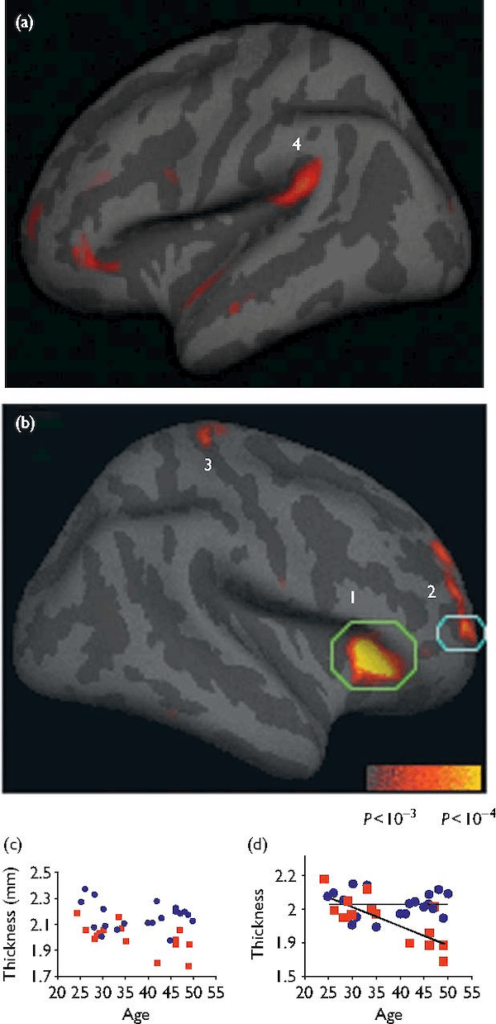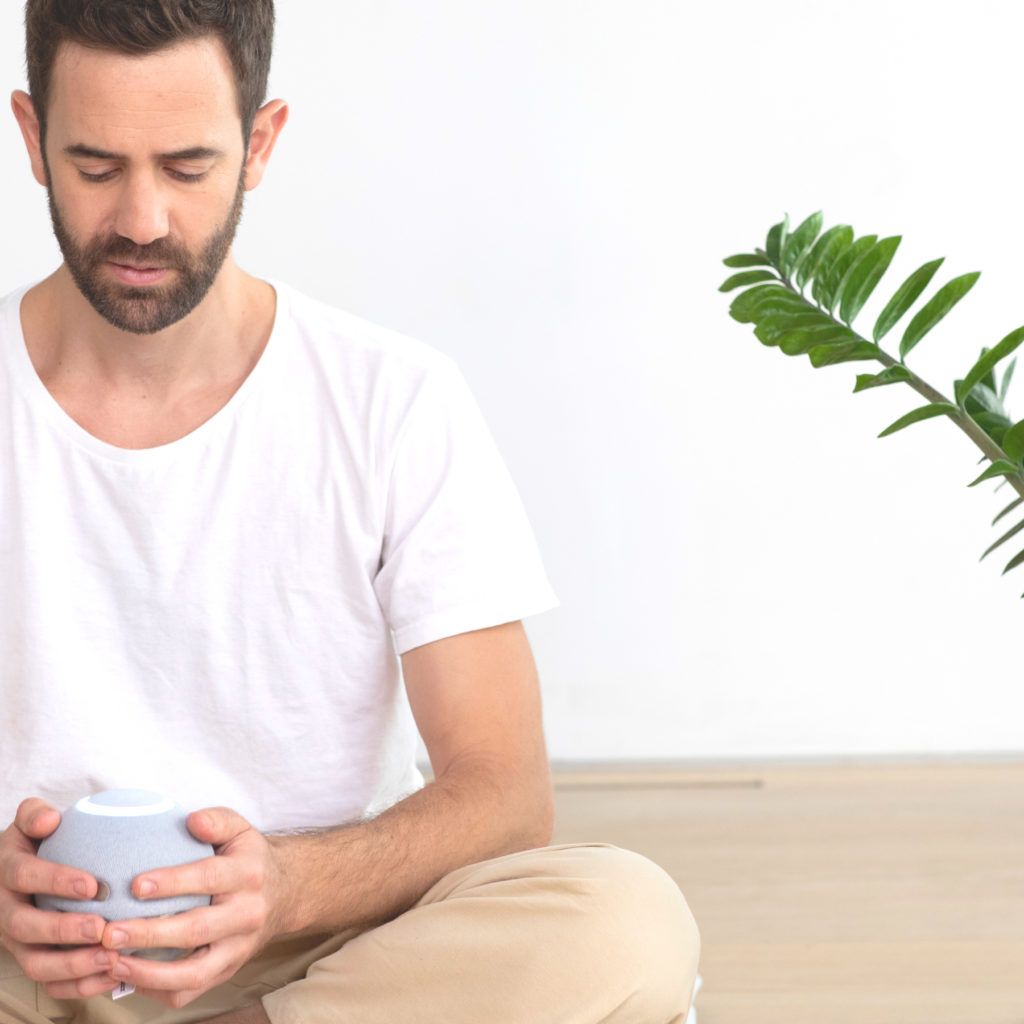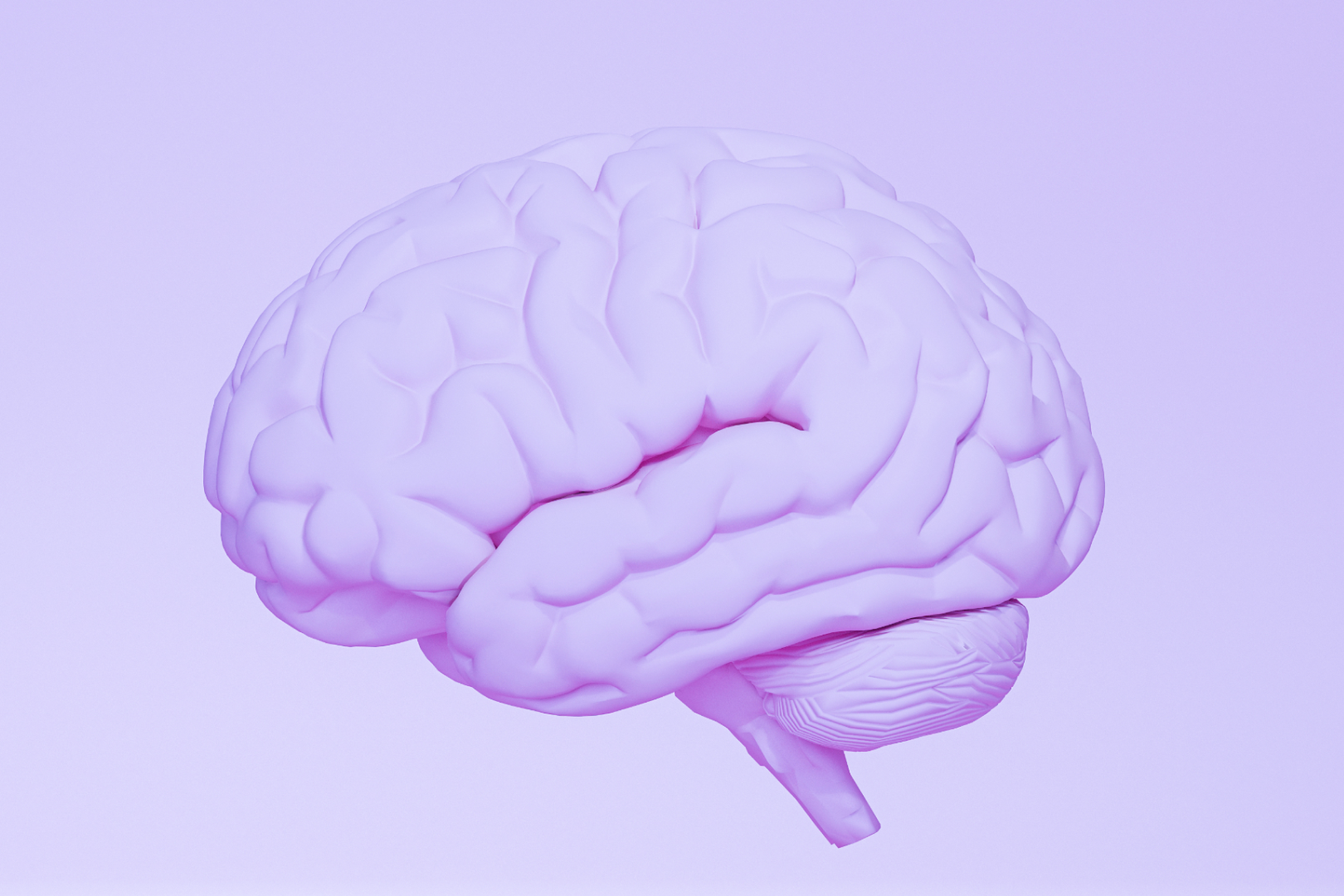You've heard all about the health and wellness benefits of practicing mindfulness. But what if we told you mindfulness activities might have the power to change your brain for the better? We don't just mean the way you think — we mean science proves that mindfulness may actually change your brain.
How? As we will further discuss in this guide, studies have shown that mindfulness might play a role in:
- Slowing the aging process of your brain
- Helping overcome addictions
- Recovering from injuries
- Managing pain
- Improving memory
- Enhancing your overall body function
Don't believe us? Here, we'll present four scientific studies that show how mindfulness may change the brain.
Plus, we're giving you the inside scoop on a revolutionary biofeedback device that can enhance your mindfulness practices, improve your well-being, and yes, possibly even bring positive changes to your brain. Keep reading to learn more.
Practicing Mindfulness and the Brain: Is There a Connection?
It seems the world is abuzz with the term "mindfulness." But is mindfulness only beneficial for relaxation — or are there more profound benefits? As it turns out, science shows that there may be a very significant relationship between mindfulness practices and your brain. Follow along as we delve into the research on the connection between mindfulness and the brain.
4 Ways Research Shows How Mindfulness Changes the Brain
#1: Mindfulness May Be Responsible for Slowing Down Aging of the Brain
Researchers from Harvard Medical School and the University of Wisconsin-Madison have uncovered evidence to suggest that daily meditation may slow down the brain's aging process.
Their paper, published in the journal Neurocase, documents the comprehensive study of a 41-year-old Buddhist Tibetan monk named Yongey Mingyur Rinpoche. A renowned meditation practitioner and teacher, Yongey Mingyur Rinpoche has engaged in meditation almost daily since he was nine years old.
After learning about the monk and his meditation practice, the researchers became curious about the impact of daily mindfulness on his brain. The study consisted of 4 MRI scans of Yongey Mingyur Rinpoche's brain over the past 14 years at ages 27, 30, 32, and 41.
During this same time, the researchers also documented MRI brain scans from a control group of 105 adults who lived in the same area and were close in age to Yongey Mingyur Rinpoche. Once collected, the scans were submitted to the Brain Age Gap Estimation (BrainAGE) framework.
An AI system designed to make an educated guess of an individual's age by simply looking at their brain scan, BrainAGE specifically notes the structure of the gray matter within the brain, which decreases in mass as individual ages.

Representative slices of YMR's brain from the different years he volunteered. Image intensities are shown with the same window levels across the years. Changes in the bias levels of those intensities were accounted for by the processing pipeline (Figure 3) and the BrainAGE estimation framework. (Franke, Gaser, Manor, & Novak, 2013, Franke, Hagemann, Schleussner, & Gaser, 2015, Franke, Luders, May, Wilke, & Gaser, 2012, Franke, Ristow, & Gaser, 2014, Franke, Ziegler, Klöppel, Gaser, & Initiative, 2010, Luders et al., 2016)
Upon evaluation, 41-year-old Yongey Mingyur Rinpoche's brain resembled that of a 33-year-old. In contrast, the members of the control group's brains revealed a typical aging pattern. However, specific regional changes did not differentiate Yongey Mingyur Rinpoche from the control group. This result suggests that the differences in brain aging may result from coordinated changes spread throughout the gray matter in the brain. The correlation? These studies suggest that mindfulness plays a massive role in slowing down the biological aging of your brain.
#2: Reward-Based Learning & Mindfulness Practices May Disrupt the Addiction Process
Anyone who has experienced addiction understands just how hard it can be to overcome, but what if we told you that practicing mindfulness can help break the addiction process? Could it be because mindfulness improves many psychological factors involved in addiction, including:
It just may be the case, but we'll talk more about this later. For now, let's dive into what science says regarding addiction and mindfulness practices. An increasing number of studies have revealed that, because of its effects on the self-control regions of the brain, mindfulness meditation may prove to be an effective way to help those recovering from various forms of addiction.
For example, one study published in the Library of National Medicine compared mindfulness training to the American Lung Association's Freedom From Smoking (FFS) program. In this study, 88 nicotine-dependent adults who smoked an average of 20 cigarettes a day were randomly assigned to receive treatment from either the FFS program or mindfulness training. Group treatments were delivered twice a week for four weeks.
As you can see in the figures below, the study found that people who regularly engaged in mindfulness training were more likely to have quit smoking by the end of the training.

Figure 1. Individuals receiving Mindfulness Training reduce cigarette smoking more than those receiving Freedom From Smoking Mixed effect regression model estimates of cigarette smoking in Mindfulness Training (MT, n=33) and Freedom From Smoking (FFS, n=38) during the week before treatment initiation and the four weeks of treatment (F=11.11, df=1,1082, p=.001). < a href="https://pubmed.ncbi.nlm.nih.gov/21723049/" target=_blank>https://pubmed.ncbi.nlm.nih.gov/21723049/
It also revealed that those individuals were more likely to have long-term success against their addictions than those in the FFS program.

Figure 2. Individuals receiving Mindfulness Training achieve greater point prevalence abstinence rates than those receiving Freedom From Smoking One-week point prevalence abstinence rates for Mindfulness Training (MT) and Freedom From Smoking (FFS) at the end of treatment (χ2=3.45, df=1, p = .063) and 17-week follow-up (χ2=6.32, df=1, p=.012), n=33 in MT and n=38 in FFS. https://pubmed.ncbi.nlm.nih.gov/21723049/
Why? One theory is that the effects of mindfulness on the brain can help individuals separate feeling cravings from the act of smoking.
The benefit? Mindfulness helped those who were addicted to acknowledge the cravings without taking action and lighting a cigarette. Instead, mindfulness taught the individuals to ride out and fully experience the craving wave until it passed. The effect mindfulness has on addiction doesn't stop at cigarettes. Research has also shown that mindfulness training may help treat other forms of addiction.
#3: Mindfulness Changes the Brain in Athletes' Ability to Recovery From Injuries
What if practicing mindfulness could help you manage pain and recover from injuries differently? Recent mindfulness brain research confirms that mindfulness may also help athletes recover from injuries. Data shows an increase in the level of pain tolerance and awareness among injured athletes who practiced mindfulness as little as once a week for two months. Researchers at the University of Kent conducted a study involving 20 athletes.
Each of them suffered an injury severe enough to keep them from participating in their sport for anywhere from three to six months. Before their injuries, the six female and 14 male athletes, aged 21 to 36, had been in training with university teams for championship events. The students were divided into two groups, both of which followed their normal physiotherapy treatment for eight weeks.
However, the students in the mindfulness intervention group also:
- Responded to three questionnaires about mood states, mindful attention awareness, depression, and anxiety
- Underwent a mindful check-in; and
- Practiced one 90-minute session of mindfulness meditation each week, consisting of mindful breathing, body scan meditation, and sitting meditation
At the beginning and end of the eight weeks, each athlete underwent a cold pressor test where they were asked to submerge one hand into a bucket of cold water, keeping it there as long as possible during an eight-minute period. A pain score was assigned depending on the length of time the hand was in the bucket.
The result? The students involved in the two months of mindfulness training demonstrated a higher level of pain tolerance than the group that did not receive mindfulness training. It's possible that practicing mindfulness may help athletes recover from injuries by drawing attention to the injury and allowing them to fully experience what is happening, so they can focus entirely on healing.
#4: Mindfulness Increases Gray Matter in the Brain Affecting Movement, Memory, and Emotions
After suffering injuries while training for the Boston Marathon, Sarah Lazar, a neuroscientist at Mass General and Harvard Medical School, took up yoga. While she initially thought that she was only taking yoga classes to learn how to stretch effectively, Lazar was pleasantly surprised to discover that she became more open-hearted and compassionate as the classes continued.
Intrigued, Lazar looked into some scientific literature on mindfulness meditation and found an increasing body of evidence revealing that meditation decreases …
- Anxiety
- Stress
- Depression
- Insomnia; and
- Pain
… while also increasing the quality of life. It was then that Lazar decided to do a little neuroscience research of her own. Her first study took a close-up look at people who had engaged in mindfulness for 7 to 9 years vs. a control group. Individuals with a strong background in mindfulness meditation had a higher level of gray matter in several areas of their brains, including the auditory and sensory cortex, and insula and sensory regions. This gray matter plays a prominent role in how we:
- Move
- Display and feel emotions, and
- Learn and remember things
But there was another factor in the study's results that caught Lazar's attention: Individuals regularly involved in practicing mindfulness had more gray matter in the frontal cortex of their brains — the area linked to decision-making and working memory.
Why is this noteworthy? Most people experience a shrinking of the cortex as they age, but Lazar found that 50-year-olds who engaged in meditation displayed the same amount of gray matter as individuals who were half their age.

Fig. 1 Cortical regions thicker in meditators than in controls. (a and b) Statistical map depicting between-group differences in thickness at each point on the cortical surface overlaid on the inflated average brain. All points meeting a P < 0.01 threshold (uncorrected) are displayed to better illustrate the anatomic extent of the areas and the relative specificity of the findings. Numbered regions: (1) insula, (2) Brodmann area (BA) 9/10, (3) somatosensory cortex, (4) auditory cortex. (c and d) Scatter plot of mean cortical thickness of each participant in the subregion above threshold within each circled region of (c) insula and (d) BA 9/10, plotted versus age. Meditation participants: blue circles, control participants: red squares. https://www.ncbi.nlm.nih.gov/pmc/articles/PMC1361002/
To be sure that this was not because some individuals had more gray matter from the start, Lazar and her team conducted a second study. This time, they invited individuals who had no experience in meditation to join an eight-week mindfulness training program.
The results were remarkable. The team discovered that a mere eight weeks of mindfulness meditation changed people's brains for the better. Participants experienced a thickening in several regions of the brain, including the:
- TPJ, which is involved in empathy and the ability to take multiple perspectives
- Left hippocampus, which is involved in learning, memory, and emotional regulation; and the
- Pons, a part of the brain stem where regulatory neurotransmitters are generated
They also experienced shrinkage of the amygdala, the region of the brain that is associated with fear, anxiety, and aggression. This reduction in the overall size of the amygdala directly correlated to a reduction in the stress levels of those individuals.
But the results didn't stop there … While the participants in the study were told to meditate for 40 minutes each day, the average time of mindfulness meditation ended after only 27 minutes. Other studies tout that you may see substantial positive changes in just 15 to 20 minutes of mindfulness a day.
Astonishing, right? Have these studies sparked your interest in how you can practice mindfulness to increase your mental clarity and wellbeing? If so, the Reflect Orb is the meditation device you need to get started on the road to holistic wellbeing and growth. It helps users analyze their body's physiological signals by providing continuous visual indicators of their mental state. With our biofeedback-based tool, you'll have assistance finding your way to relaxation.
Mindfulness Practices Have Positive Effects on the Brain, But What Does Mindfulness Actually Mean?
Mindfulness is a meditation technique that involves sustaining a moment-by-moment, gentle awareness of your:
- Thoughts
- Body's sensations
- Emotions
- Feelings, and
- Surrounding environment
Mindfulness involves paying attention to our feelings and thoughts without judgment — accepting your feelings and not viewing them as right or wrong. By accepting these feelings, we can focus more on what we're feeling in the present instead of thinking about the future or reliving the past.
What Does Practicing Mindfulness Look Like?
Mindfulness can be as simple as:
- Finding a comfortable place to sit
- Setting a timer (5-10 minutes is perfect for a beginner)
- Noticing your body
- Feeling your breath as it goes in and out
- Paying attention to your mind wandering and returning to focusing on your breath
- Being kind to yourself and not judging your thoughts
Other ways to practice mindfulness include:
- Practicing mindful eating by slowly chewing your food and tasting every bite
- Delaying the use of electronics each day
- Focusing on gratitude
- Noticing what each of your five senses is experiencing
- Concentrating on your rate of breathing
- Practicing active listening
- Paying attention to your surroundings
- Creating an intention or focus for each day, and
- Fully experiencing whatever activity you are engaging in
Practicing mindfulness allows you to become intensely aware of yourself in that moment — your feelings and senses — to relax your body and mind completely.
The Reflect Orb: Improving the Functions of Your Brain Through Practicing Mindfulness
Meet the Reflect Orb: Your personal companion on the journey to holistic wellbeing.

BEFORE SESSION: Settle Into Your Safe Space
Each day, set aside a few minutes in your schedule when you can concentrate on your practice. First, settle into your favorite spot, allowing yourself to feel present in the moment. Then, activate your Orb by placing both hands on either side to begin your session.
DURING SESSION: Engage in a Relaxation Practice
While journeying with Reflect, make it your own. Pair your daily session with soothing music, concentrated breath, or a guided meditation. Take note of your Orb's light ring as it 'breathes' into different colors. This will help you better understand your path to relaxation.
AFTER SESSION: Navigate to the Reflect app.
You choose the length of each session, so feel free to sit in your relaxation as long as you desire. Afterward, you can check the app to see your progress, journal the experience, and more. To learn more about the app, click here.
Our Science-Backed Approach
Our purpose is to provide you with an insightful experience that helps you find and develop a greater connection to yourself. So, we made it happen. We built Reflect from the ground up with a strong foundation in trusted scientific methods.
Reflect was born from a process that has remained rooted in rigorous discipline and research from start to finish. The biofeedback technology that powers your daily relaxation sessions is a proven method of guiding you towards awareness of your body at its physical, mental, and emotional levels. Breathe easy. Your path starts here.






